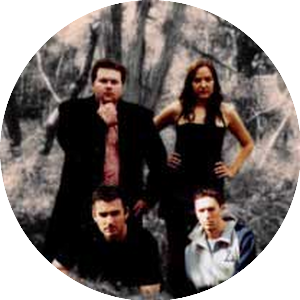Motivation
I knew that Telos Publishing existed in 2005, but I hadn’t read anything they had published. They’d lost their licence to make limited edition Doctor Who novellas the year before and had shifted their fiction range into the Time Hunter series, but I hadn’t followed that either. But I knew a few of the people who had written for Telos, and I had a little spare cash – possibly the fee from my Big Finish short story in Short Trips: Solar System – so I bought Simon Forward’s Shell Shock and Daniel O’Mahony’s The Cabinet of Light. I read the latter and fell in love: the prose was so atmospheric, that I immediately wanted to write something similar … and I knew that The Cabinet of Light was the book that Telos had spun off into the Time Hunter series.
When I bought The Winning Side, I was already thinking about writing a Time Hunter. When I read it, I thought I could do something better, so I started to come up with an idea.
Inspiration
In terms of setting and tone, the thing I most wanted to emulate was The Cabinet of Light. It is one of the best books to have been written for Doctor Who, and captures its historical setting through an almost perfect use of mood, detail and colour. I wanted to write in this style, and I wanted to write in this world.
The other main influence on The Albino’s Dancer was the Starman collection Night and Day, by James Robinson. In the collection, a story spanning a single day is told through four chapters, each showing the point of view of a single character: by following each of their days, the reader uncovers the full story … and sees the overlaps from each perspective. I’d played with this structure in my fan fiction, and wanted to see if I could do more.
The last influence was my dream to make the Albino a recurring character in Doctor Who. I’d doodled him around the time I was writing Heritage, and included him in a short story pitched for Big Finish’s Short Trips: Zodiac and a Seventh Doctor PDA pitch entitled Zugzwang. Both were rejected: you cannot dictate which characters are important in a shared universe.
Getting the Story
I started coming up with The Albino’s Dancer the way I start most things written in a shared universe: I made notes on what I knew of the main characters and any major features of their world, and also any key scenes I already had in my head. The scene that the novella formed around was the moment Honoré saw the Albino and Emily travelling back through time. The idea that followed was a spaceship crash stranding the Albino and Catherine Howkins on Earth, with the Albino wanting to go back to prevent it by letting Catherine die. Catherine, obviously, wanted to save herself from this alteration.
I then tried to write a chapter-by-chapter synopsis, which proved to be a mistake. I quickly realised that I needed to write a linear version of the story – with cause preceding effect – and then overlay the structure. When I could ignore what I wanted to do structurally, the story quickly developed away from the spaceship crash and towards its final form. With the story fixed, I set the rule of starting each point of view at its earliest chronological point: each character has a timeline that moves forwards through the story, and you only see a character at an earlier point than they first appeared from somebody else’s point of view.
Outside Help
Once the synopsis was finished, I gave it – as I usually do – to my now wife to read and comment on. Unfortunately, my now wife is not a big fan of Science Fiction, and so the more time travel became central to the plot, the more she found it difficult to tell me if everything made sense. This led to me putting out a general call on a newsgroup I frequented to ask if anyone wanted to give me feedback on the story.
A number of people accepted the challenge, and we have since formed something of a reading group: even if you end up completely ignoring what somebody tells you, hearing what they think of your story will invariably make it stronger. That moment when you think “No, you’re wrong, because this story is actually this“ will bleed into the story and make sure that it actually is this.
I had one final post-comment draft of the synopsis – bringing the total number of drafts to five – and I was ready to send it to Telos.
The Pitch
I pitched my synopsis to Telos by email to David J Howe. I had – briefly – met David at what I can only refer to as the ill-fated Gallifrey 2003 convention, and I had also interviewed him via email for my paper in Time and Relative Dissertations in Space. Both of these brief contacts probably made me feel better about contacting him “cold”, and – because of Heritage – I felt confident enough that I wouldn’t need to include a sample of my writing. This turned out to be true, but my confidence in my reputation was misplaced:
I recall I knew your name but not much else about your work … did you pen a Virgin book at all? If you did then I probably had read it.
This is something to remember: a prior credit that a producer has heard of might get you higher up in the slush-pile, but it doesn’t mean they have any idea who you are. To this day, David J Howe can’t remember any work I’ve done that wasn’t for Telos, and that is exactly how it should be. There was a certain goodwill that comes from knowing that somebody else has decided you’re good enough to publish, but the reason The Albino’s Dancer was accepted was:
As I recall I liked the idea as it played with time, and this was what the core of the Time Hunter series was about. It was also a good concept and idea for a novella, and something that could probably only work as novella as the form is ideal for this sort of ‘experimental’ writing.
Telos said they were interesting in publishing the novella.
Editorial
The way I work is to suggest and tweak ideas and to bounce things back and forth … that’s the editor’s job … if I see something which needs more work I’ll say.
The main thing that David introduced to the story was a rule that no two characters could time travel to the exact same moment. If a character tried to go where a time machine was already active, they would get bounced through to the next point where it wasn’t. Introducing this involved another synopsis, but made the story stronger: when you’re dealing with time travel, the audience sometimes need an answer to the question “Well why not go back again and change it until it’s what you want?”, and this provided it.
My natural response as a writer is to defer to an editor – they are, after all, paying the money and so can take their choice – and so far I don’t think it’s made my work any weaker. But sometimes I wonder if that means I don’t invest in my own work enough. Perhaps I should be more certain that my writing works, and so at least be able to argue my side of any writing decision I’ve made?
I don’t expect an author to argue, nor do I expect them to just do what I suggest … but I do expect them to come back and discuss if they don’t agree with my suggestions … we can then talk it over and reach compromises or whatever is needed - it’s the authors’ name on the book at the end of the day and not mine, so they need to be happy with the suggestions and so on.
I don’t think that I’ve ever accepted a change that I wasn’t happy with. Every editorial suggestion I’ve received has either made the story better or – perhaps more crucially – not taken it completely away from what I’ve wanted to write. But also in the back of my mind is the fear that I might get a bad reputation:
[We] don’t expect or appreciate a hostile response - which we have received on some occasions over the years. That’s really not helpful and doesn’t endear us to wanting to work with the author again.
And so – while I’m happy to ignore comments at draft stage from friendly readers, no matter how much I admire their work – I will generally accept an editor’s comments on an otherwise final work. I think this is something you have to find your own line on, and it will shift depending on the work, the editor and the change. But there is a part of me that wishes I had written something – anything – that I wanted to fight for.
What Happened Next?
Immediately following The Albino’s Dancer’s publication, I pitched two short stories I’d written as potential original novellas to Telos. Both were rejected, and both should have been: neither were strong stories or suited to expansion, but I pitched them because I had the idea that I’d built a relationship and had no real idea what to do to exploit it. Then Telos moved away from publishing fiction, and I pitched them a factual book completely at odds with their output – a history of British Hip Hop: I had at this point at least realised that they would probably say no, and made it clear that this was very much a “just in case” pitch. They said no.
However, the lesson to take from this is that none of these rejections has affected how Telos see me. Asked if they’d work with me again, David J Howe replied “Yes indeed”, and in 2013 Telos invited me to attend the Sci-Fi Weekender to represent Telos authors. As much as I see Telos as a missed opportunity – for not pitching the right story whilst they published original fiction – I also see them as a friendly supporter, and one of the most recognised and respected credits on my writing CV.


